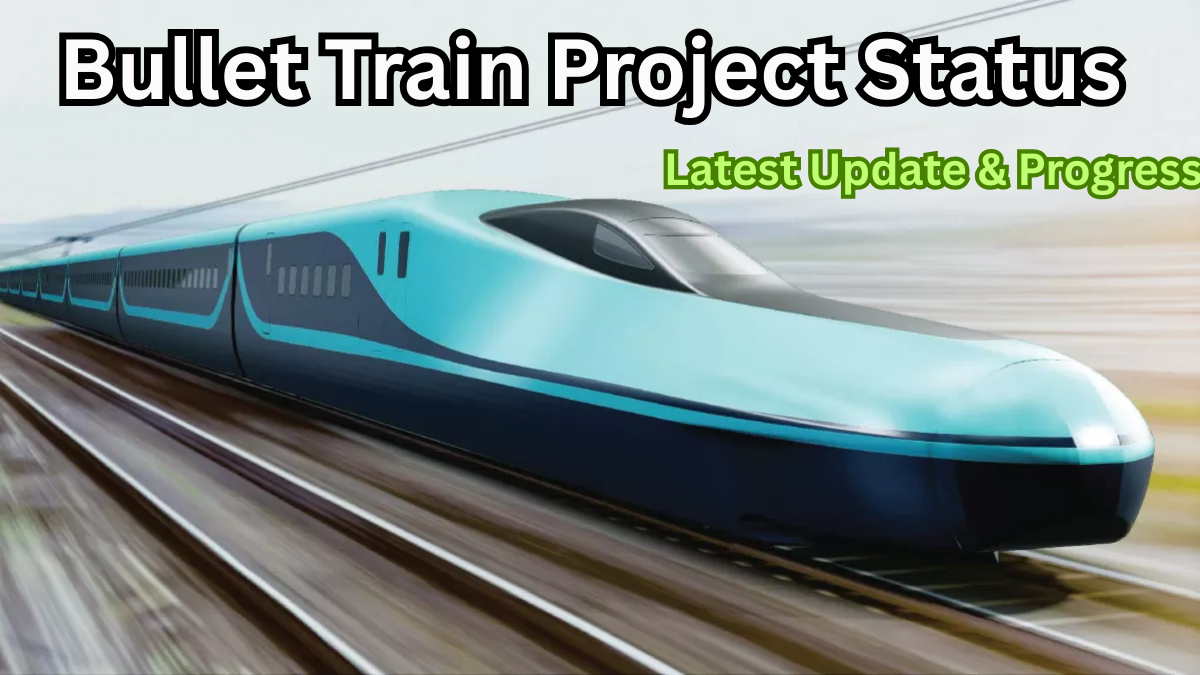India’s dream of having its first high-speed rail corridor is steadily moving forward. The Bullet Train Project 2025, officially known as the Mumbai–Ahmedabad High-Speed Rail Corridor, is one of the most ambitious infrastructure projects in the country. Once completed, this modern marvel will cut travel time drastically and bring India on par with global leaders in high-speed rail technology.
Let’s take a closer look at the Bullet Train Status in 2025, the latest developments, and what lies ahead.

Why is the Bullet Train Project Important for India?
The High-Speed Rail India initiative is not just about reducing travel time—it’s about transforming the country’s transportation system.
-
Faster connectivity – Travel between Mumbai and Ahmedabad in just 2–3 hours instead of 7–8 hours.
-
Boost to economy – Generates employment, investment opportunities, and faster business mobility.
-
Sustainability – Promotes energy-efficient transport compared to traditional trains.
-
Global recognition – Puts India on the map alongside Japan, France, and China in high-speed rail networks.
Bullet Train Project 2025 – Latest Progress
Here’s an updated look at the Bullet Train Status as of 2025:
| Project Aspect | Latest Updates 2025 |
|---|---|
| Corridor Route | Mumbai to Ahmedabad (508 km) |
| Maximum Speed | 320 km/h |
| Travel Time | 2–3 hours |
| Stations Planned | 12 stations across Maharashtra & Gujarat |
| Current Construction Status | 60% completed (civil work, bridges, tunnels) |
| First Trial Run Expected | Mid-2026 |
| Final Launch Target | By 2027 (Phase-wise operations may start earlier) |
Key Highlights of the Project Updates
-
Underground tunnel construction near Thane is progressing rapidly.
-
Over half of bridges, viaducts, and pillars are already completed.
-
Japan’s Shinkansen technology ensures safety and global standards.
-
Thousands of jobs created, boosting local and regional economies.
Challenges Faced in the Bullet Train Project
While the Bullet Train Project 2025 is moving forward, it also faces challenges:
-
Land acquisition delays in certain areas.
-
High project costs requiring international funding.
-
Technical complexities such as the undersea tunnel.
-
Environmental concerns regarding ecological balance.
What’s Next for High-Speed Rail India?
Looking ahead, the project aims to:
-
Complete major civil works by late 2025.
-
Conduct full-scale trial runs in 2026.
-
Launch the first phase by 2027, marking India’s entry into the global bullet train network.
FAQs on Bullet Train Project 2025
Q1. What is the expected completion date of the Bullet Train Project in India?
The project is expected to start operations in phases by 2027, with trial runs planned for 2026.
Q2. What will be the travel time between Mumbai and Ahmedabad once the bullet train starts?
It will take just 2–3 hours, compared to the current 7–8 hours by regular trains.
Q3. How many stations are included in the Bullet Train Project 2025?
There will be 12 stations along the 508 km corridor.
Q4. Why is Japan involved in the Bullet Train Project?
Japan is providing technology, expertise, and financial assistance through its Shinkansen model, ensuring international standards in speed and safety.
Click here to learn more
